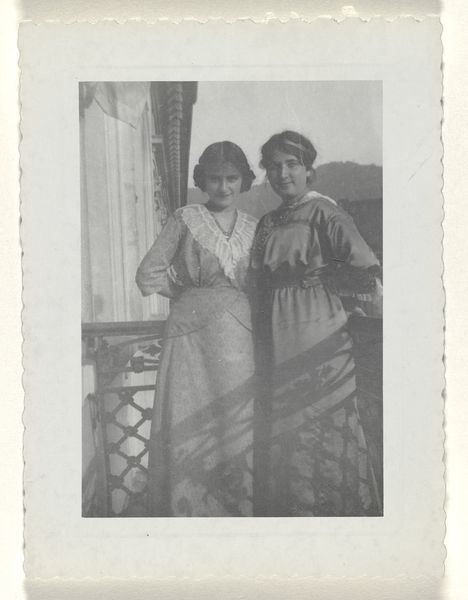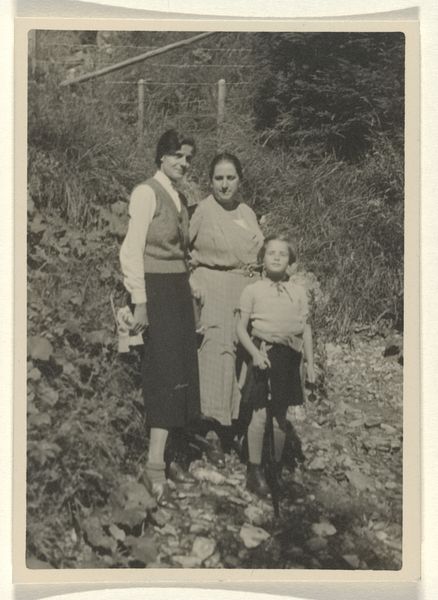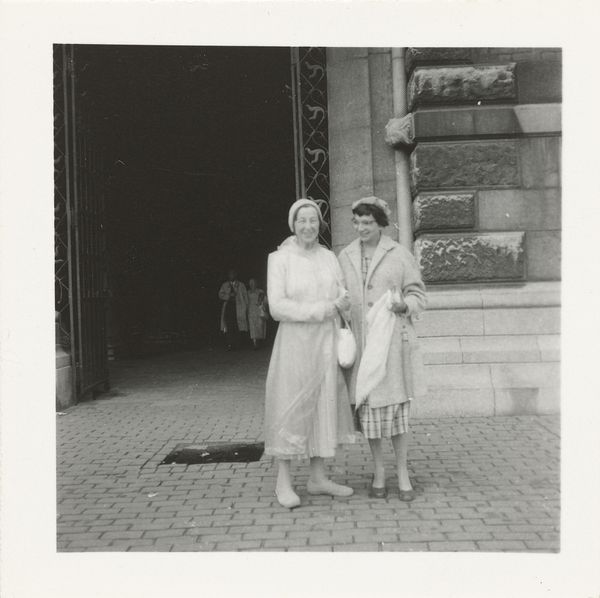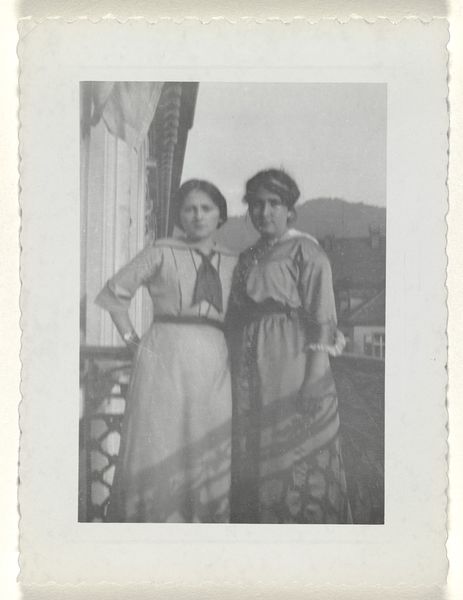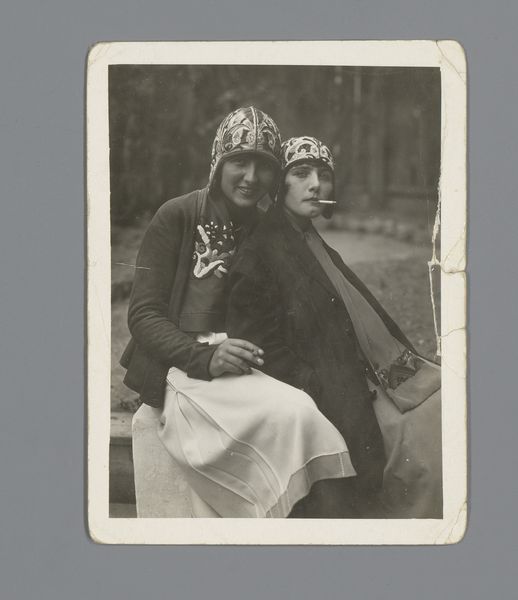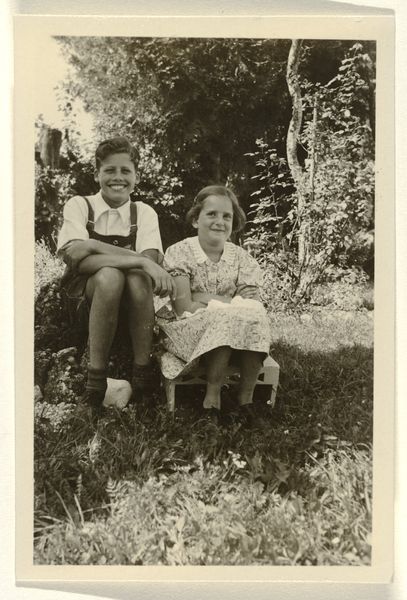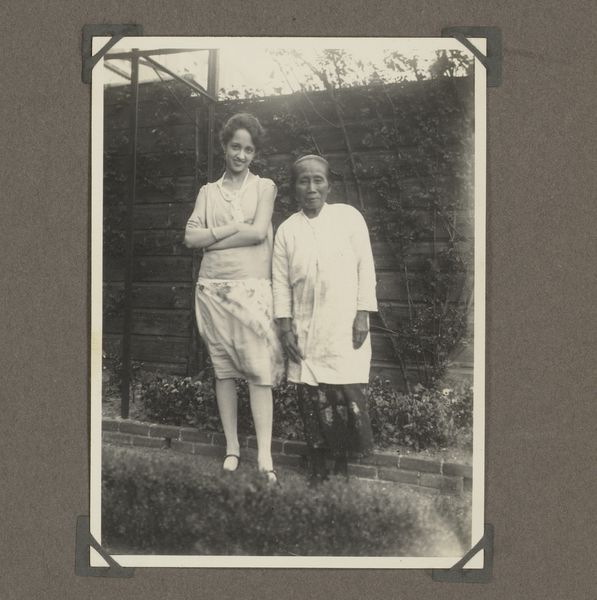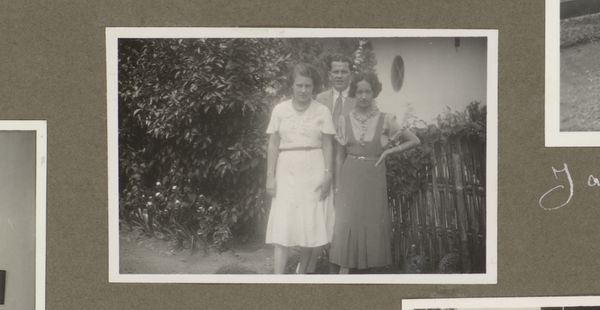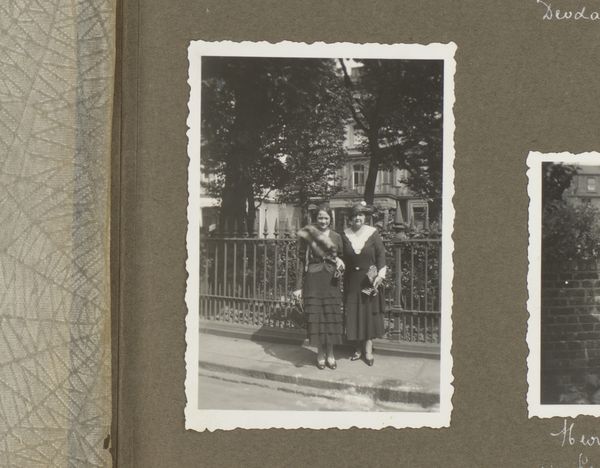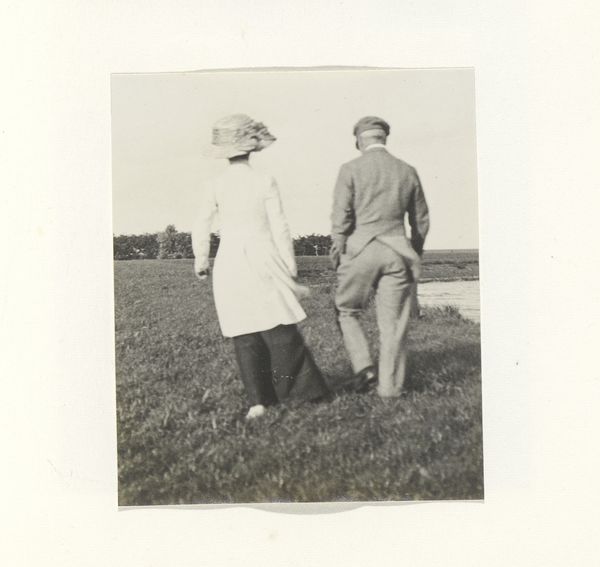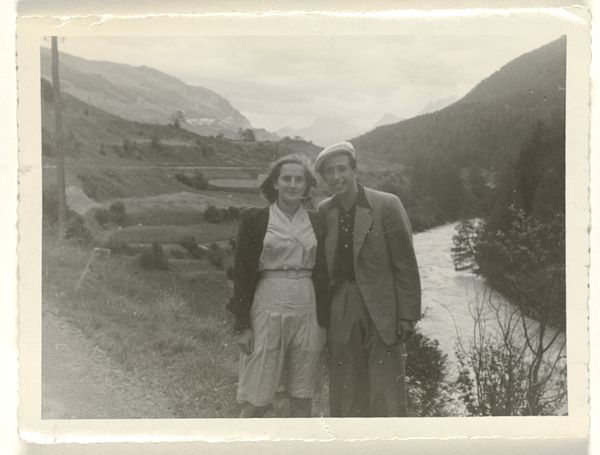
Leo Blumensohn en Isabel Wachenheimer in lange jassen, staand voor Parssen en witte gebouwen, Davos 1946 1945 - 1949
0:00
0:00
Dimensions: height 85 mm, width 65 mm
Copyright: Rijks Museum: Open Domain
Curator: The photograph before us, titled "Leo Blumensohn en Isabel Wachenheimer in lange jassen, staand voor Parssen en witte gebouwen, Davos 1946," was taken sometime between 1945 and 1949. It's a gelatin-silver print. My first impression is a sense of quiet formality. They seem reserved. Editor: There’s a starkness, wouldn't you say? Something almost post-apocalyptic in its grayscale rendering. Their matching overcoats suggest a uniformity, yet I'm struck by the individual expressions—hers a guarded smile, his a direct gaze that suggests determination, but also apprehension. It's clearly a posed photograph. Who are these people, and why were they standing in front of that building? Curator: Absolutely. The location, Davos, in post-war Switzerland, is incredibly important. Switzerland was neutral territory. Blumensohn, judging from the name, was perhaps Jewish. Editor: Precisely. We must contextualize this photograph within the socio-political environment of the time. The uniformity and quiet could also reflect the immense effort it took, particularly for Jewish survivors to rebuild in the late 1940s. Every element speaks volumes when seen through the lens of survival and resilience in the aftermath of the Holocaust. Even a mundane photo like this one holds powerful history. What stories it contains! Curator: I agree. It’s a deceptively simple image. I wonder if the uniformity of their clothing could represent an effort to fit in and appear “normal” again. The building in the background seems strangely desolate as well, especially if it's meant to be a spa or resort. There is also a hint of defiance there as well, almost daring anyone to judge them. Editor: That hint of defiance humanizes them, complicating the narrative. And I completely agree on the point of "normality", their attire, along with their decision to capture the photo in front of such place reveals an active and persistent need for ordinary life and memories despite all the adversity they were going through. This photograph serves not only as a record of a certain time but also speaks volumes about human identity, and the persistent pursuit for life itself after a traumatic experience. Curator: Ultimately, this photo, captured anonymously, acts as both a social document of that period and a memorial, as do countless similar pieces of archive photography. Editor: And one that insists we keep asking questions, always connecting these isolated images to the greater narrative. It compels us to ask: What world did these people envision after unimaginable tragedy, and did that dream materialize?
Comments
No comments
Be the first to comment and join the conversation on the ultimate creative platform.
